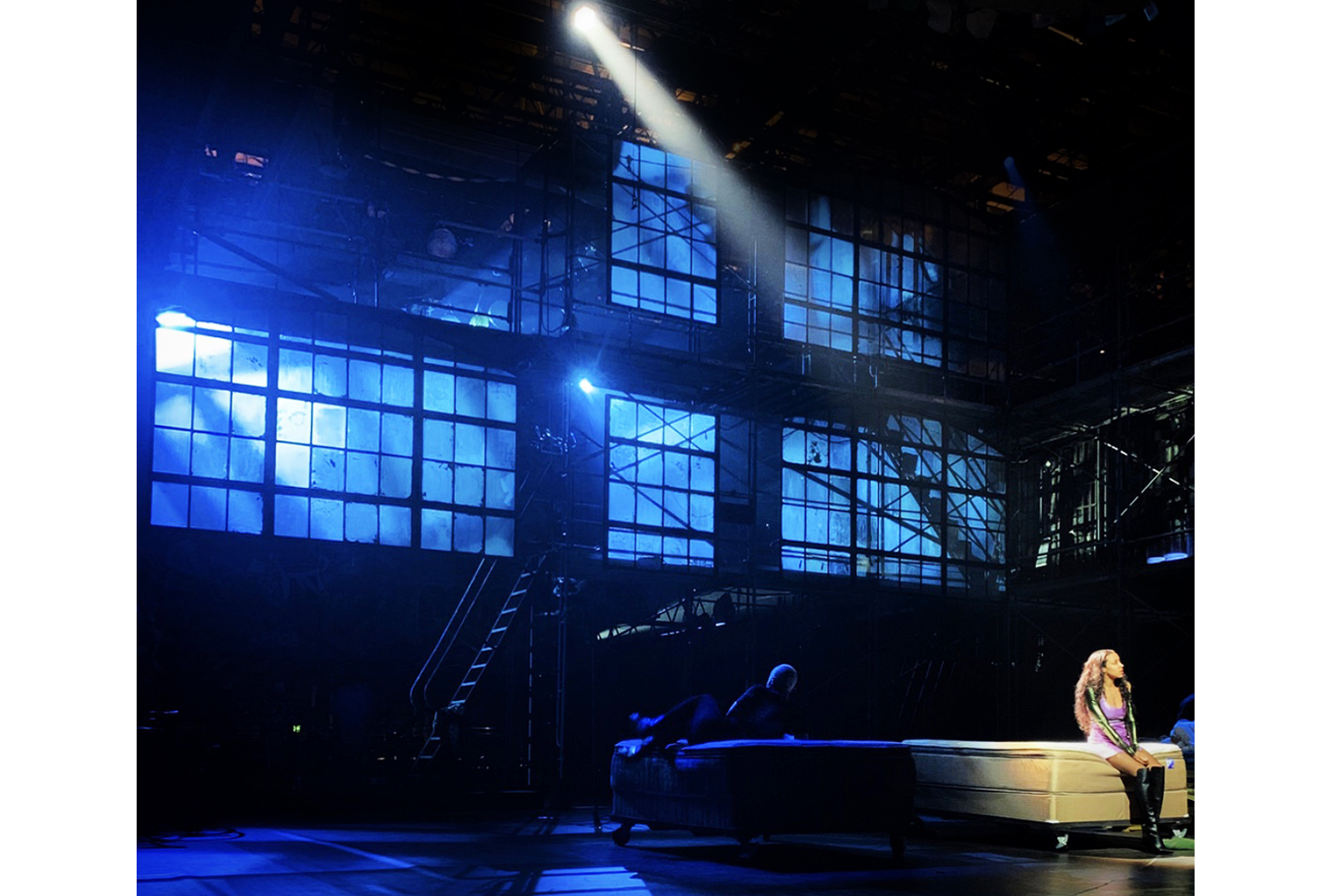Rent: Live is the most recent of the Broadway musicals staged for a live television broadcast. Lighting designer Al Gurdon, who won a 2018 KOI-USA Award for his lighting design of last year’s live-for-broadcast production of Jesus Christ Superstar, spent a month at Fox Studio 16 in Los Angeles, rehearsing for the January 27, 2019 airing. Rent is set circa 1991, during the AIDS epidemic in New York City, and the set reflects the gritty, industrial aspect of the Lower East side at that time. Check out Gurdon's plots, credits, and gear list for the production.
That scenic design by Jason Sherwood was challenging to light, yet Gurdon welcomed the challenge. “Rent had a main set in the middle with walkways around it. From a logistical point of view, it was very complicated,” says Gurdon. “For Jesus Christ Superstar, there was one big space informed by the lighting. Rent had many different areas and many different spaces, like many 360° sets in one environment,” adds the LD. “These live musicals are all challenging in different ways, but Rent was probably the most complex in terms of the physical space within the studio, and how it was shot.
“I came to think of Jason Sherwood’s beautiful and ingenious set as one that had been turned inside out. Unlike Jesus Christ Superstar, there was no one single vantage point within the studio space from which one could see the whole production. I had 11 PRG Ground Control Best Boy followspots, but none of them could cover more than about 25% of the action areas. The only way to see the complete show is via the camera cut, and a significant proportion of this was with Steadicams that tracked the cast in and out of scaffolding corridors, under bridges, into and out of rooms, constantly shifting perspective,” explains Gurdon.

“This was not merely theatre-in-the-round; it literally covered every possible angle. But set entirely at night and, for much of the play, during a power cut, the challenges stacked up,” Gurdon points out. “Visually, this production needed to be much more theatrically focused than anything we had done previously, because of the way it is written and sung, and the context of its’ setting. So every angle, all the time, with total precision, was the tough brief and the goal of the design and the programming,” the LD adds.
“I knew what the core rig would be and where I would need it, with lights coming from many different locations from many angles. I knew I would need more fixtures, including moving lights, shuttered, keyed in different directions. I kept adding fixtures throughout,” says Gurdon.
Approaching the design, Gurdon knew that he would only be able to get halfway there before arriving on site and participating in the dry blocking. “One small change of an actor’s position can mean the use of a completely different light, and then when the camera shot is factored in, the light may need to change again. So I have to design a rig that is functional and versatile, without knowing in advance which lights I am going to use in which scene. I knew that I would need to shape the light, so my choice of ‘workhorse’ keying fixture was the PRG Best Boy HP, and knowing also that I would need to paint in areas of color anywhere in the set, I used a combination of GLP X4 and X4s,” he notes.

“During the dry blocking, I walk around with the action, calling in the lights as we go, setting a color and intensity by eye and then adjusting when I see it on camera. So it is a constantly shifting process of logistics and balance, working toward what is, hopefully, a consistent aesthetic,” notes the LD. “I also knew that I would need to use small lights tucked away in all sorts of places to get light into the small and complex spaces in which we were shooting, so I had a large proportion of TBD fixtures, mini profiles, LED matchsticks, small Fresnels and profile lamps of various sizes to deploy as and where they were needed.”
Gurdon also notes that “finding the balance between the ‘reality’ of the drama, and the visceral theatrical expressionism needed to underpin the emotion of a song or scene is always a process of discovery, and one of the first things I talk about with a director. Approaching these projects with the fervor of somebody who is denied motivated light sources in his day job, I tend to start from a position of more ‘reality’ and gradually shift toward the ‘magic’ that the director Michael Greif wanted all along. One needs both to create a compelling visual dynamic. A good example of this approach is in scenes such as ‘Contact,’ with writhing silhouetted bodies under a sheet. There is nothing real about it, but a combination of powerful lighting and camera effects gives it raw, emotional impact and drama.”